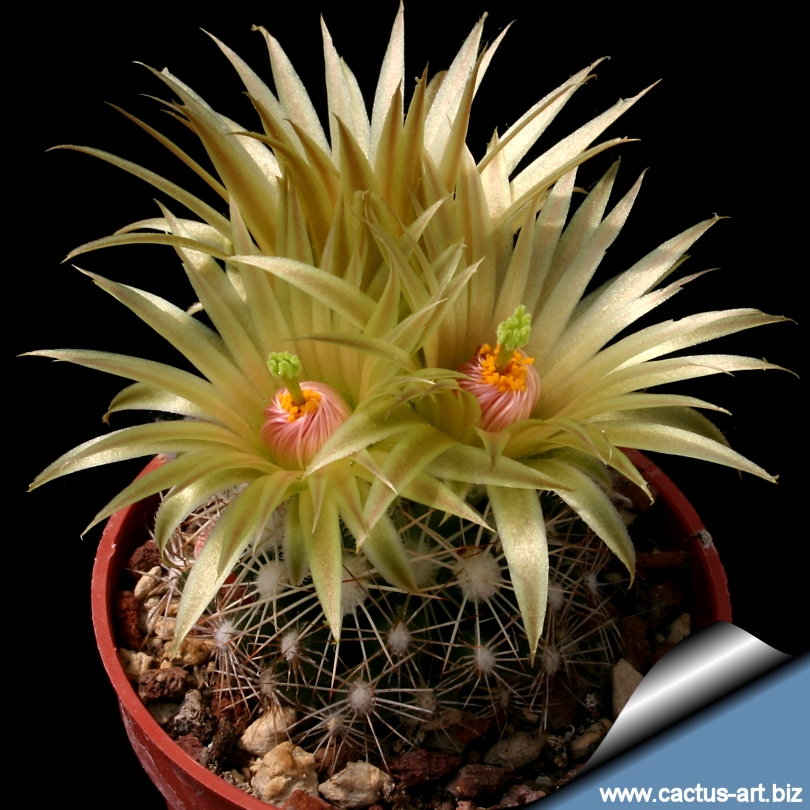|

Escobaria missouriensis is one of the most hardy cacti ( to –35°C
) and grows up to the border of Canada (it survives even in Scandinavia,
Northern Europe, and without any protection at all).
At first glance it
seems very much like
E. vivipara but the strange copper flower colour and brightly
coloured fruit will quickly distinguish it. Though not exactly showy,
the straw-yellow, brown, or amber flowers are quite appealing, as are the
bright red fruit that persist from late summer to spring.
It is variable
over its huge range, and worth obtaining in various forms.
Description: Unbranched or profusely branched
(eastern populations), forming clumps up to 30+ cm
in diameter.
Roots: Diffuse or short taproots, sometimes adventitious from bases of
branches.
Stems: Deep-seated in substrate, becoming flat-topped and nearly
subterranean in winter, 2-8 wide × 1-10 cm tall;
Tubercles: 5-21 soft; areolar glands absent;
Areoles: With short white wool, not obscuring
the basal portion of
the spine.
Spines: 6-21 per areole, slightly pubescent, bright white, pale
grey, or pale tan, weathering to grey or yellowish brown, dark brownish
orange to pale brown or pale greyish pink tips present on all or only
the largest plants;
Radial spines: 6-20 per areole, moderately to tightly appressed,
4-16 mm
Central spies: 0(-3) per areole, if 1, erect, if 2,
ascending-spreading, 8-20 mm long.
Flowers: Nearly apical, 18-50 mm long, 15-50 mm wide tepals,
fringed (rarely entire), pale greenish yellow to yellow-green, with midstripes of green or rose-pink to pale brown
Filaments: Brighter pink than inner tepals, pinkish with greenish
white bases, or uniformly whitish;
Anthers: Bright yellow;
Stigma lobes: 3-7, green or yellowish, 1-5 mm.
Fruits: Bright orange-red to scarlet when mature, spheric to
ellipsoid, 5-10 mm, slightly succulent but not juicy, floral remnant
weakly persistent, often lost through weathering.
The closest relatives of Coryphantha missouriensis
are C. asperispina Boedeker of Mexico and C. cubensis
Britton & Rose of Cuba. Those species collectively composed the
segregate genus Neobesseya, now rarely accepted. |